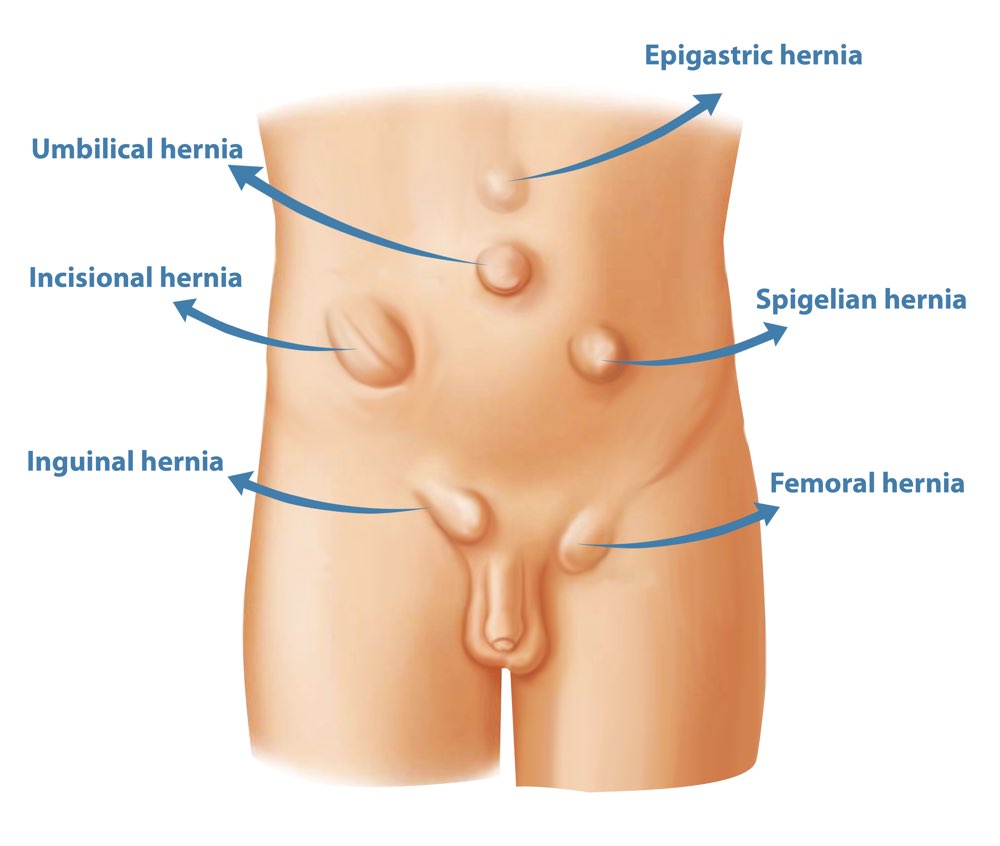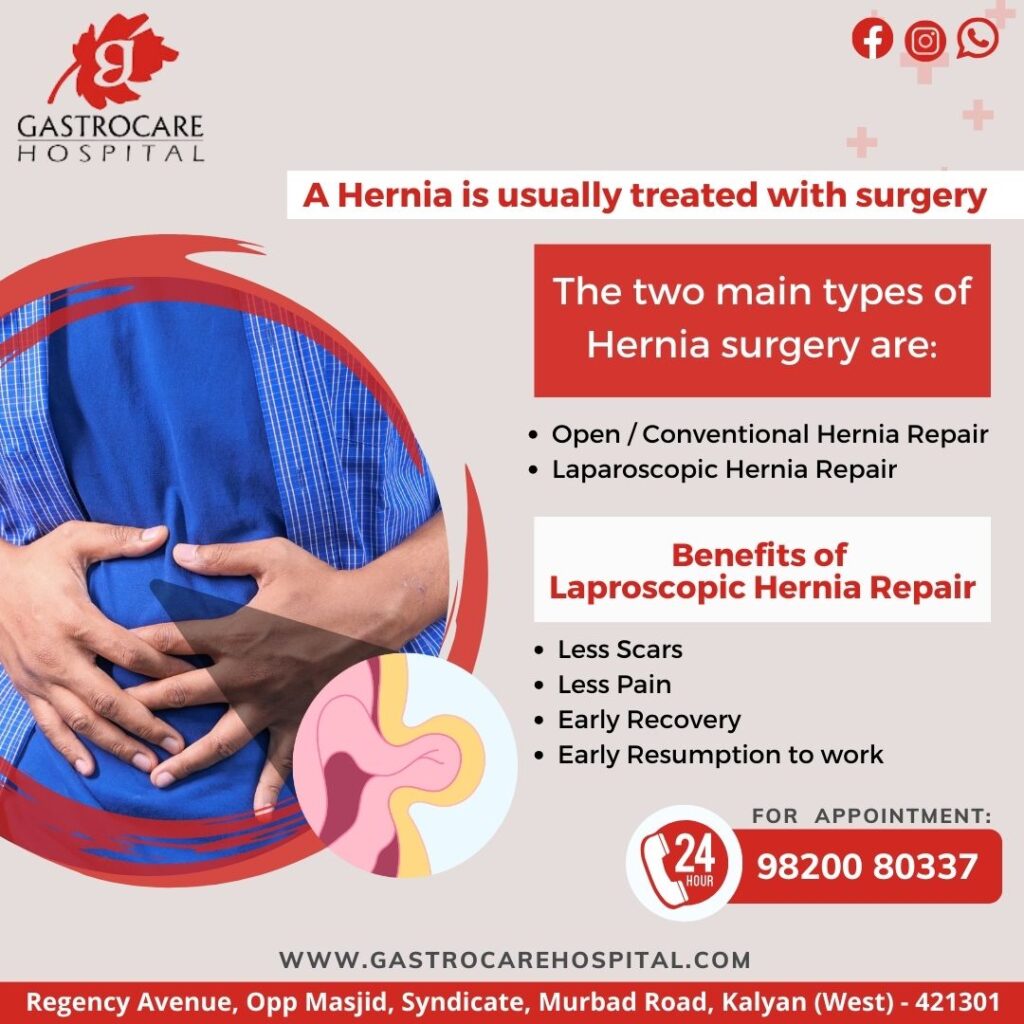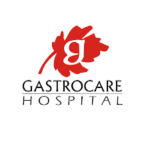Hernia Treatment
- HOME
- HERNIA TREATMENT
HERNIA
A hernia is a common medical condition characterized by the protrusion of an organ or tissue through an opening or weakened area in the surrounding muscle or connective tissue. It can lead to discomfort, pain, and potential complications if left untreated.
Hernias manifest in various forms, each distinguished by its location and characteristics. The inguinal hernia, prevalent and found in the groin, emerges as intestinal or abdominal tissue protrudes through the inguinal canal in the lower abdomen. Umbilical hernias, on the other hand, materialize near the navel, arising from weakened abdominal tissue, resulting in a noticeable bulge.
Incisional hernias arise from prior abdominal surgeries, where weakened or separated muscle tissue permits organs or tissue to protrude through. Hiatal hernias differ from the rest, involving the upper stomach pushing through the diaphragm into the chest cavity, often leading to acid reflux and heartburn.
Femoral hernias, less common than inguinal hernias, arise when tissue, typically intestinal, protrudes through the femoral canal situated near the groin. Epigastric hernias manifest in the upper abdomen, situated between the navel and breastbone, stemming from a weakness in the upper abdominal muscle tissue.
Finally, the Spigelian hernia, an infrequent occurrence, forms along the edge of the rectus abdominis muscle, primarily in the lower abdomen. Recognizing these distinct hernia types is crucial for accurate diagnosis and appropriate treatment. If one suspects a hernia, seeking professional medical evaluation is imperative for effective management.


What Causes Hernia ?
Hernias can arise from various underlying causes – Weakened abdominal muscles, a common factor, may result from aging, pregnancy, or prior abdominal surgeries. Additionally, excessive strain during bowel movements or when lifting heavy objects increases abdominal pressure, heightening the risk of hernias. Conditions like chronic obstructive pulmonary disease (COPD) or persistent coughing can also contribute to their development. Furthermore, excess body weight places additional pressure on the abdominal wall, further elevating the likelihood of hernias. It’s worth noting that in some cases, a genetic predisposition may make certain individuals more susceptible to developing hernias. Understanding these contributing factors is crucial in both prevention and effective management.
Schedule Your Appointment !
Treatment Options:
Treatment Options for Hernias
Watchful Waiting: In some cases, particularly with small, asymptomatic hernias, a healthcare provider may recommend monitoring the condition without immediate intervention.
Hernia Truss or Belt: These supportive devices are worn over the hernia to help hold it in place. They can provide temporary relief but are not a long-term solution.
Surgical Repair: This is the most effective treatment for hernias. It involves pushing the protruding tissue back into place and strengthening the abdominal wall with stitches or a mesh patch.
Laparoscopic Umbilical Hernia Repair is a minimally invasive surgical procedure used to treat umbilical hernias. It involves making small incisions near the hernia site and using specialized instruments to push the protruding tissue back into place. A mesh is then placed over the weakened area to provide additional support and prevent recurrence. This technique offers advantages such as faster recovery times, reduced pain, and smaller scars compared to traditional open surgery.
Laparoscopic Inguinal Hernia Repair is a minimally invasive approach for treating inguinal hernias. It involves making small incisions and using a laparoscope (a thin, flexible tube with a camera) to guide the surgical instruments. The hernia is repaired by placing a mesh over the weakened area, providing reinforcement to the abdominal wall. This technique offers quicker recovery, less post-operative pain, and smaller incisions compared to traditional open surgery.
Laparoscopic Hiatal Hernia Repair is used to treat hiatal hernias, which involve the stomach protruding through the diaphragm. This procedure utilizes small incisions and a laparoscope to reposition the stomach and repair the opening in the diaphragm. It offers benefits such as shorter hospital stays, reduced post-operative pain, and faster recovery compared to open surgery.
Open Hiatal Hernia Repair is a traditional surgical approach for treating hiatal hernias. It involves making a larger incision in the abdomen to access the hernia site. The surgeon manually repositions the stomach and repairs the diaphragmatic opening. While effective, this method typically involves a longer hospital stay and longer recovery period compared to laparoscopic procedures.

FAQs
No, hernias do not typically resolve without medical intervention and may worsen over time.
It is advisable to consult a healthcare provider before starting or continuing an exercise routine with a hernia, as certain activities may exacerbate the condition.
While rare, hernias can recur after surgical repair. Proper technique and post-operative care significantly reduce this risk.
Recovery time varies, but most individuals can return to light activities within a few weeks and resume normal activities within a few months.
Trustindex verifies that the original source of the review is Google. Dr.yogesh palshetkar sir is very patient and listen all health issues very politely and give more time and don't tell to do any no needed medical test .all staff is also respectfull nurses and reception madam .Trustindex verifies that the original source of the review is Google. Best service given of cashless mediclaim facility with hassle free cashless claim by Miss.Anshula from mediclaim department Thanks for her support and coordination she is a gem of a person...and was waiting till approval .... Thanks to hospital tooTrustindex verifies that the original source of the review is Google. Iam sharing my personal experience with this hospital after 3 months of surgery of my younger brother....my brother's appendix laperoscopic surgery done by DR. YOGESH PALSHETKAR Sir , who is excellent in his practice with the experience of more than 25 yrs, very smoothly he done the operation within 3 days discharged and patiient is ok till now no pain, no discomfort. Hospital staff is polite, all nurses & mavashi's are very caring. I specially want to thank ANSHULA Madem who done the Cashless procedure very easy for us. Thank you all team of Gastrocare kalyan. I recommend this hospital to all of you.Trustindex verifies that the original source of the review is Google. Great experience with Gastrocare hospital, the staff is very supportive, doctor is very helpful they will explain everything and all the treatment options for your problem. Also, special thanks to Anshula Mam, who took lot of effort in mediclaim settlement, She is great human being, friendly behaviour, she teaches lot of things which help in real life...My wife is feeling well now...thanks once again😊🙌Trustindex verifies that the original source of the review is Google. I am very Glad & Very Thankful for Caring Patient in Gastrocare Hospital, Dr Yogesh Palshetkar's assume Treatment with Good Support & Care & Thankful to Anshula Mam who helped me in Claim Process Settlement. 😊Trustindex verifies that the original source of the review is Google. Dr Yogesh Palshetkat Sir is very patient and listen to your all health issues and give more time Great medical office, wonderful and warm experience from start to finish. Appreciate Dr taking time to go over the diagnosis clearly and treatment options Gastrocare is one of the best hospital in Kalyan. Highly recommended :)
